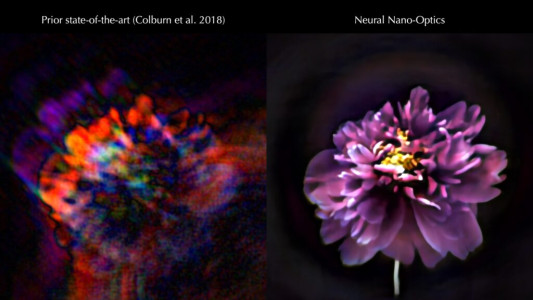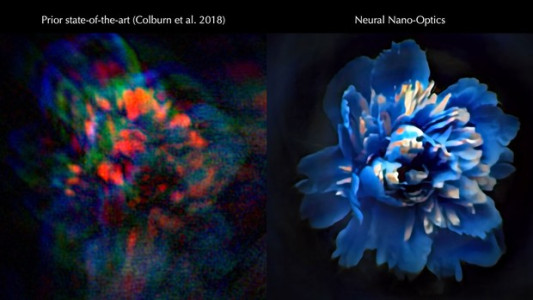
WHY THIS MATTERS IN BRIEF
Everything gets smaller and better, and camera systems are no exception which opens up all manner of new use cases and applications for them.
 Love the Exponential Future? Join our XPotential Community, future proof yourself with courses from XPotential University, read about exponential tech and trends, connect, watch a keynote, or browse my blog.
Love the Exponential Future? Join our XPotential Community, future proof yourself with courses from XPotential University, read about exponential tech and trends, connect, watch a keynote, or browse my blog.
Camera systems are changing beyond all recognition – from regular glass that uses Artificial Intelligence (AI) to take photos, to the development of flat lenses, and tiny 3D printed lenses that are thinner than a human hair – as well as cameras that can take photos around corners … Now though in another first researchers at Princeton and the University of Washington have developed a tiny camera, the size of a grain of salt, which can snap sharp, full-color images. It’s made with a metamaterial that captures light, and ultimately it could be scaled up to turn entire surfaces into cameras and sensor systems. Imagine, for example, just being able to spray a wall with “smart paint” and turn it into a giant camera – we already have that tech coming down the line – and you get some idea of what the future could look like.
The device looks like little more than a clear panel with a circular pattern etched into it. That half-millimeter wide circle contains 1.6 million cylinders, each carefully designed to bend light in just the right way so that the array as a whole shapes the optical wavefront. AI signal processing algorithms then produce an image from that data.
The resulting images are far more crisp than other small sensors. In tests, the team showed that the new sensor captured images measuring 720 x 720 pixels in full color, capturing wavelengths between 400 and 700 nm in natural light, with a spatial resolution of 214 line pairs per mm. It has a field of view of 40 degrees and an f-number of 2, and the researchers say that the shots are on par with those captured by a conventional compound camera lens that’s a staggering half a million times bigger than their new sensor.
The post-processing algorithms do much of the heavy lifting in improving the image quality, and these were designed alongside the metamaterial to ensure they worked well together.
Another advantage is that the devices are simple and cheap to produce, meaning they should be relatively easy to scale up for production. They’re made of silicon nitride, and the nanostructures of the surface can be produced using deep ultraviolet lithography, a technique already used to make semiconductors.
If they were to be mass produced, the team says that the devices could be used for medical imaging in the body, providing small robots with better vision, or even turning basically anything into a camera by lining a surface with thousands of these sensors.
“We could turn individual surfaces into cameras that have ultra-high resolution, so you wouldn’t need three cameras on the back of your phone anymore, but the whole back of your phone would become one giant camera,” says Felix Heide, senior author of the study. “We can think of completely different ways to build devices in the future.”
The research was published in the journal Nature Communications.
Source: Princeton University




















